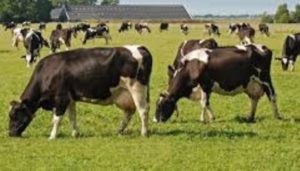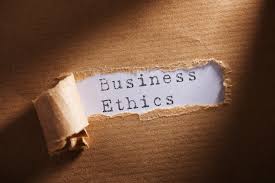 A new report by the Farm Animal Investment Risk & Return (“FAIRR” — get it?) tries to take yet another new tack on the ongoing demonization of livestock production.
A new report by the Farm Animal Investment Risk & Return (“FAIRR” — get it?) tries to take yet another new tack on the ongoing demonization of livestock production.
Titled, “The Future of Food: The Investment Case for a Protein Shake Up,” the report starts off by stating that, “Currently, much of the world relies on meat for its protein requirements — with approximately 70% of livestock now produced in factory farms. However, as recent research by FAIRR and others has shown, factory farming is emerging as a high-risk production method linked with significant environmental damage and major public health issues, such as the emergence of antibiotic resistant bacteria and outbreaks of pandemics such as avian flu.”
(Actually, avian flu and other zoonotic diseases almost always originate outside so-called factory farm environments. It’s the backyard, unregulated, “natural” growers where such diseases originate — but back to the disaster that is global meat production.)
“As the world’s population rises and demand for protein grows, the current protein supply chain simply cannot cope. It’s a recipe for a financial, social and environmental crisis. Forward-looking investors and large food companies can move now to respond to and help shape this burgeoning market.”
The “burgeoning market” to which the report is referring, of course, is the vegetarian foods sector. As FAIRR projects the future of food, “Some governments are already moving to legislate against highly polluting and potentially carcinogenic foods.”
And I don’t need to spell out what those polluting and carcinogenic foods might be.
The impact of change
So let’s play FAIRR’s game and project a forward-looking future in which plant protein replace meat proteins. The primary source of the veggie alternatives that would replace the protein we would no longer be consuming in the form of animal protein is soy. But if soybeans were to become the replacement for meat and dairy, would that really address the problems FAIRR cited — deforestation and resource limitations — that animal agriculture supposedly causes?
First of all, look at Brazil. The country that has become the world’s No. 1 exporter of soybeans has wiped out massive swaths of the Amazon rainforest to grow the crop. Simply overlay a map of the rainforest’s original boundaries with another map of the leading soybean production areas. The three leading states in terms of production are Mato Grosso, Mato Grosso du Sul, and Golas, which together produce nearly 42 million tons of soybeans annually.
Those states are primarily located within the Amazon basin, and the destruction of the tropical rainforest in Brazil to support the country’s soy and sugar cane production is arguably one of the world’s most problematic eco-disasters, a key contributor to what FAIRR labels as “significant environmental destruction.”
But not one word about the impact of Brazil’s soy production from the anti-meat industry activists, not even during the Rio Olympics, when the world’s attention was focused on a myriad of problems afflicting the country.
And even without a change in diet, USDA forecasts that soybean exports from Brazil, already exceeding 76 million tons a year, will increase by 35%, and not by 2050, when FAIRR projects the collapse of the global protein supply chain, but by 2025.
That’s only nine years away, so it’s fair to ask: How will Brazil produce another 27 million tons of soybeans by 2025? There’s only one way: Mow down more of what’s left of the shrinking Amazon rainforest to cultivate soy production.
Now, of course the argument that groups like FAIRR always resurrect is that the soy protein currently used to produce livestock feed would be diverted to human consumption. That presumes that the entire world will collectively embrace a vegetarian lifestyle, which isn’t going to happen no matter how seriously FAIRR’s fantasy of the investment community suddenly getting religion about meat-eating were to actually happen.
But even still, the idea that livestock can just disappear, and all the nutritional value currently supplied by animal foods can be replaced by plant proteins — without any environmental impact — is a far greater fantasy than thinking that global investors are going to wake up one morning and start driving the world’s food supply chain toward vegetarianism.
In fact, despite its energetic demonization of meat production, the FAIRR report hints at some solutions that would mitigate the eco-impact of animal agriculture: Improvements in livestock production practices, such as greater efficiencies in breeding, feeding and management and greater reliance on “natural” systems of production, ie, the use of pastures and grasslands to raise cattle.
Instead of blaming the planet’s environmental problems, public health crises and resource constraints on the livestock sector, it’s about time for an honest calculation of what the real-world impact would be of a wholesale shift to a vegetarian diet.
Such a transformation, were it even possible to be accomplished, is not without impact on all of the issues blamed on meat production.
To continue the fantasy that the most significant challenges facing the global community could all be solved by just saying no to meat is the height of dishonest, un-FAIRR propagandizing.
The opinions in this commentary are solely those of Dan Murphy, a veteran food-industry journalist and commentator
Source: cattlenetwork














